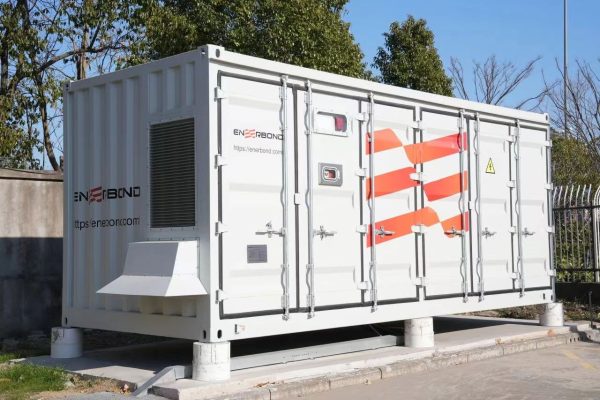A Complete Buyer’s Guide for Energy Storage Projects
When planning an energy storage system, one of the most important early decisions is whether to go off-grid or grid-tied (hybrid).
Both options use similar components — PV panels, inverters, batteries, and controllers — but they serve very different purposes.
Choosing the wrong configuration can lead to unnecessary costs, poor performance, or limited energy independence.
This article explains the technical differences, cost implications, and ideal use cases for each setup, helping you make the right investment in your solar + storage system.
1. Understanding the Two System Types
🟩 Off-Grid System
An off-grid system operates independently from the utility grid.
It uses solar PV (and sometimes diesel or wind) to generate power, and batteries to store energy for night or cloudy days.
Key features:
- No grid connection
- 100% self-powered
- Requires energy storage for continuous supply
- Common in remote areas or islands
🟦 Grid-Tied Hybrid System
A hybrid system is connected to the grid but also includes a battery.
It can draw power from solar, grid, or battery as needed.
Key features:
- Works with or without solar
- Automatically switches between energy sources
- Supports backup during outages
- Ideal for urban and industrial users
2. System Architecture Comparison
| Component | Off-Grid System | Grid-Tied Hybrid System |
|---|---|---|
| Power Source | PV / Generator | PV + Grid |
| Energy Storage | Essential | Optional (for backup or tariff optimization) |
| Inverter Type | Off-grid or hybrid | Hybrid or AC-coupled |
| Grid Connection | None | Bi-directional (import/export) |
| Backup Capability | Continuous | Partial or full, depending on design |
| Typical Users | Remote sites, telecom, farms | Homes, factories, small businesses |
3. How Power Flows
Off-Grid System Flow
PV → Charge Controller → Battery → Inverter → Loads
(No grid connection)
Hybrid System Flow
PV → Hybrid Inverter → Load + Battery ↔ Grid
(Grid can import or export energy)
Hybrid systems can prioritize solar, store excess in batteries, or sell to the grid depending on setup and regulations.
4. Pros and Cons of Off-Grid Systems
✅ Advantages
- Complete Energy Independence
No dependence on grid supply or tariff changes. - Ideal for Remote Areas
Perfect for villages, islands, or mining sites where grid extension is costly. - Scalable for Critical Loads
Can be expanded with diesel generators or microgrid control. - Stable Power Supply
Immune to grid failures or blackouts.
❌ Disadvantages
- High Initial Cost
Requires larger battery banks to cover multi-day autonomy. - Battery Dependence
Long cloudy periods can cause power shortages. - Maintenance Complexity
Requires regular system checks and battery management. - Limited Scalability for Large Loads
Off-grid inverters and batteries can get expensive for >100kW systems.
⚙️ Off-grid systems make sense where grid connection is impossible or unreliable.
5. Pros and Cons of Grid-Tied Hybrid Systems
✅ Advantages
- Energy Flexibility
Seamlessly use solar, battery, or grid power. - Lower Investment
Smaller battery capacity is needed since the grid acts as backup. - Reduced Bills
Time-of-use optimization: charge when grid power is cheap, discharge during peaks. - Backup Power
Provides power during outages — especially critical for homes and factories. - Feed-in Capability
In some regions, excess solar can be exported to earn feed-in tariffs.
❌ Disadvantages
- Dependent on Grid Availability
Total independence is not achieved. - Regulatory Constraints
Grid export policies vary — some countries restrict net metering. - Slightly Lower Efficiency
More power conversions (AC/DC) compared to pure off-grid. - Complex Control Logic
Requires smart EMS for balancing solar, grid, and battery priorities.
🌍 Hybrid systems suit areas with stable grids but high electricity tariffs or frequent short outages.
6. Cost Comparison
| Category | Off-Grid | Grid-Tied Hybrid |
|---|---|---|
| Initial Cost | $$$$ | $$$ |
| Battery Size | Large (1–3 days autonomy) | Moderate (2–6 hours backup) |
| Inverter Cost | Higher (fully off-grid rated) | Medium (bi-directional hybrid) |
| Maintenance | Higher | Lower |
| Payback Period | 8–10 years | 4–6 years |
| ROI Source | Energy independence | Tariff optimization & self-consumption |
7. Battery Sizing Differences
Off-Grid Example:
Remote lodge with 20 kWh/day consumption
→ Needs 60 kWh usable storage for 3-day autonomy
Hybrid Example:
Urban home using 20 kWh/day
→ 10–15 kWh battery is sufficient for nighttime and outage backup
🔋 Key takeaway:
Off-grid = larger battery for full autonomy
Hybrid = smaller battery for energy optimization
8. Technical Design Considerations
| Design Factor | Off-Grid System | Grid-Tied Hybrid |
|---|---|---|
| PV Sizing | Must exceed daily load | Can be smaller (grid supplement) |
| Battery Chemistry | LFP preferred for safety and cycle life | LFP or NMC depending on space |
| EMS Settings | Prioritize battery use | Prioritize cost optimization |
| Inverter Protection | Islanding protection not required | Must meet anti-islanding standards |
| Control Logic | Simple | Complex, with grid sync control |
9. Use Case Examples
🏝️ Off-Grid Example: Island Workshop (30 kW System)
- PV: 40 kWp
- Battery: 150 kWh LFP
- Diesel generator as backup
- Completely off-grid for tools, lights, and refrigeration
- Payback: ~7 years compared to diesel-only
🏠 Hybrid Example: Urban Villa (10 kW System)
- PV: 12 kWp
- Battery: 15 kWh
- Grid-tied hybrid inverter
- 70% self-consumption, grid support during peaks
- Payback: ~5 years through bill savings
10. Regulatory and Grid Interaction
Off-Grid:
- No grid license or feed-in required.
- Easier installation but local permits may apply for safety.
Hybrid:
- Must comply with grid synchronization and export standards (e.g., IEEE 1547, VDE 4105).
- Utility approval required for grid connection.
⚖️ Always check local regulations — in some markets, grid export is limited or requires dedicated metering.
11. Maintenance and Monitoring
Both system types benefit from smart monitoring.
- Off-Grid: Focus on battery health, depth of discharge, and solar yield.
- Hybrid: Monitor grid import/export and optimize time-of-use settings.
Modern EMS systems allow remote diagnostics and data-driven optimization, which is essential for commercial buyers.
12. Future Trends
- Smart Hybrid Systems: AI-based EMS that learns user behavior to optimize charging.
- Microgrid Integration: Combining off-grid and hybrid systems for community power.
- Virtual Power Plants (VPPs): Aggregating hybrid systems for grid support services.
- Hybrid EV + Storage Solutions: Using EV batteries as backup in hybrid systems.
As technology evolves, the line between off-grid and hybrid is blurring — future systems will be adaptive, modular, and data-driven.
13. Summary Table
| Feature | Off-Grid | Grid-Tied Hybrid |
|---|---|---|
| Grid Dependency | None | Partial |
| Ideal Location | Remote / unstable grid | Urban / stable grid |
| Battery Size | Large | Moderate |
| Investment | Higher | Medium |
| Backup | Full | Partial or full |
| Feed-in Tariff | No | Possible |
| ROI | Longer | Faster |
| Target Users | Farms, islands, telecom | Homes, factories, schools |
Both off-grid and grid-tied hybrid systems have clear advantages — the right choice depends on your location, grid stability, and financial goals.
- Choose Off-Grid if your site is remote, grid access is unreliable, or full independence is required.
- Choose Hybrid if you want to save on electricity bills, improve reliability, and enjoy partial autonomy at a lower cost.
Ultimately, the best solution often combines the strengths of both — hybrid-ready systems that can operate off-grid when needed.
Such flexible architectures future-proof your investment in a rapidly changing energy landscape.









